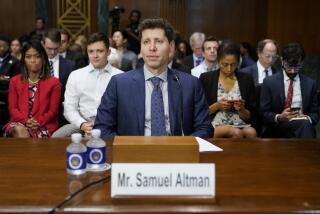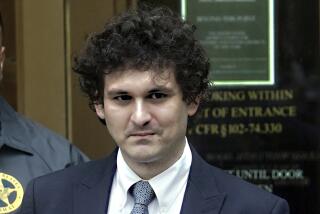Another insider-turned-author mines Goldman Sachs
Goldman Sachs is a sacred order, at least in the minds of some of its staff.
âWhat Happened to Goldman Sachsâ is the second book in 12 months from a former employee that accuses the bankâs management of not being sufficiently devout. Steven Mandis, who was an investment banker and proprietary trader from 1992 to 2004, is the latest to break the code of silence.
Last year Greg Smith wrote a public resignation letter in the New York Times in which he complained that the company had a âtoxicâ culture and referred to its clients as âmuppets.â
This idea that Goldman is holier than thou â or at least holier than Morgan Stanley â permeates both books even though those at the very top of the bank seem more ambivalent.
In 1979 John Whitehead, then co-head of the business, laid down Goldmanâs guiding rules. Mandis quotes him as saying, âIn the first draft, there were 10 principles, and somebody told me that it looked too much like the Ten Commandments, so I made it into 12.â
Thirty years later, Lloyd Blankfein, chief executive, joked that he was doing âGodâs work,â only to be roundly criticized.
Mandis charts the journey of the bank from Whitehead to Blankfein, partnership to public company and always trusted advisor to often amoral traders. Like Smith, he is uncomfortable with this âorganizational drift.â
At the core of his argument is a fairly simple, but nonetheless profound, tale. Goldman confronted a dilemma in the 1990s and 2000s: stay small and get outmuscled by competitors or get big and conflicted. It chose the latter.
The book, âWhat Happened to Goldman Sachs: An Insiderâs Story of Organizational Drift and its Unintended Consequences,â was based on Mandisâ doctoral thesis for a sociology degree at Columbia University. The book was published by Harvard Business Press Books.
Mandis spoke to âover 50â of Goldmanâs âpartners, clients, competitors, equity research analysts, investors, regulators and legal experts.â But other than an interview with Whitehead, who provides some of the most interesting commentary, we know neither who they were nor what they said. The author says, oddly, âI did not take notes during the interviews.â
He provides an adequate list of the conflicts that arise when you underwrite debt, advise on deals and take your own proprietary positions â a greater spectrum of entanglements than existed before Goldman decided to become more international and go public.
But Mandis includes little of his time at Goldman. That is a pity because when he does write of his own experience, there are flashes of insight.
In the process of becoming big, for example, Goldman started providing financing to private equity firms and struggled to maintain a separation between the teams working on the deals. âAt first we preferred they were physically on separate floors, but then there were not enough floors,â he writes. Goldman has never succeeded in resolving this dilemma.
Mandis, like Smith, seems to believe that what made Goldman special â a commitment to righteousness hinted at in Whiteheadâs sacred text â has been diluted or lost.
âOur clientsâ interests always come first,â reads the first principle. A copy of the principles was sent to each bankerâs home, Mandis writes, âto help family members understand and cope with the long hours and travel demanded of their loved ones.â
It is difficult to see how these absences are ameliorated by bankers preaching that they put their clients first but perhaps Goldman spouses are different.
Goldman itself is different: It retains its mystique even after these firsthand accounts of the inner sanctum and even though rivals are pledging ever-greater transparency.
Jamie Dimon, chief executive of JPMorgan Chase, cannot stop claiming to be âopen kimonoâ with the outside world. James Gorman, head of Morgan Stanley, has faced similar structural challenges to Blankfein, but he has been far more open about how he plans to tackle them.
One competitor calls Goldman a âblack box,â providing less detail on strategy and how it actually makes its money than its competitors. That this is still true is a failure of everyone who attempts to explain it, including the most recent insider accounts. And herein, perhaps, lies the enduring success of the high priests.
Tom Braithwaite is the U.S. banking editor of the Financial Times of London, in which this review first appeared.
More to Read
Inside the business of entertainment
The Wide Shot brings you news, analysis and insights on everything from streaming wars to production â and what it all means for the future.
You may occasionally receive promotional content from the Los Angeles Times.










